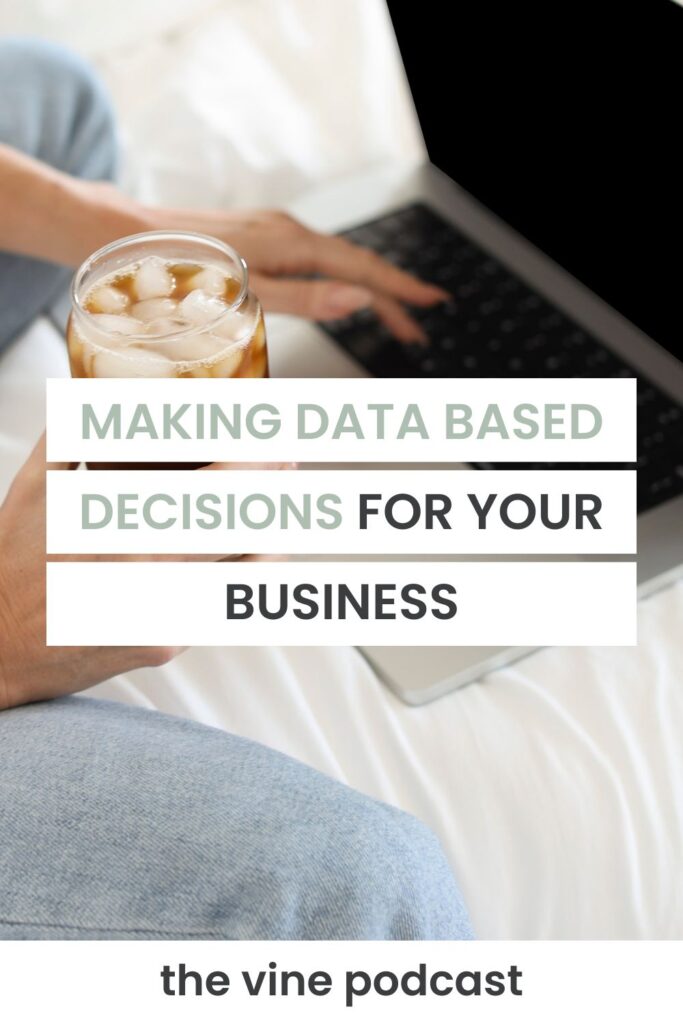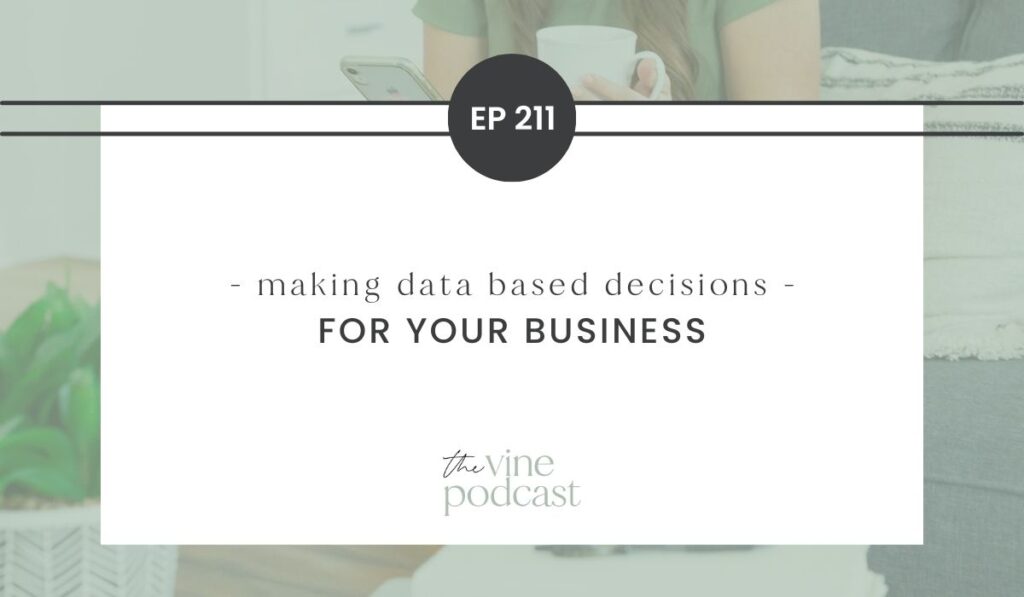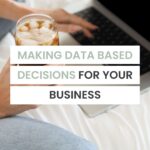Have you ever made an emotional decision that impacted your food blog? It can be so easy to chase the next big thing for your business, but you could find yourself frustrated with the lack of results. In today’s episode I’ll share how you can shift away from emotion based decision making and focus on making data based decisions that will serve your business and help it grow! If you’re tired of feeling like you are spinning your wheels, this episode will help you determine and focus on the things that move the needle forward for your food blog.

The Emotional Decision Trap
As food bloggers, we’re naturally creative people. We love experimenting with recipes, styling beautiful photos, and sharing our passion with our audience. This creativity serves us well, but it can also lead us astray when it comes to business decisions.
Here are some common emotional decision traps you might recognize:
- Feeling bored with your content creation routine, so you chase new platforms or trends
- Suffering from “shiny object syndrome” or FOMO about new strategies
- Comparing yourself to competitors and feeling the need to copy what they’re doing
- Not taking time to evaluate what’s actually working in your business right now
Sound familiar? While there’s absolutely a place for intuition in your business, relying on emotions 90-100% of the time likely won’t yield the growth you’re looking for.

Data Points You Should Be Tracking
To make effective data-based decisions, you first need to track the right metrics. Here are some key data points to monitor:
Traffic and Top Content
Most of us check our analytics occasionally, but how deeply do you analyze them? Try looking beyond just your top 10% of posts. Consider:
- Your next tier of performing content (what could be optimized to reach the top tier?)
- Bottom-performing content (what should be updated or retired?)
- Traffic sources for your top posts (where are people finding you?)
Revenue Channels
Even if 80-90% of your income comes from ads, tracking all your revenue sources can reveal growth opportunities. That affiliate program bringing in just 1% of your income now could become much more with focused attention.
Email Subscribers
Analyze which forms and lead magnets are bringing in the most subscribers. One blogger shared how she identified a high-converting printable in an air fryer recipe post and then added that same opt-in to ALL her air fryer recipe posts – resulting in thousands of new subscribers.
Your Time
Time tracking might sound tedious, but it’s transformation for your productivity and decision-making. Knowing exactly where your hours go helps you:
- Focus better and stay on task
- Allocate your time to high-priority activities
- Identify areas where you’re spending too much (or too little) time
Ad Revenue by Source
This often-overlooked metric shows exactly how much money you’re making from each traffic source. Before investing in growing your Pinterest traffic or Instagram following, check how much revenue these channels currently generate for your business.
Creating a Framework for Data-Based Decisions
Ready to start making more data-driven choices? Here’s a simple framework:
- Identify what data you need: Before making a decision, determine what information would help you choose wisely
- Analyze your top-performing content: Look for patterns in what’s working well
- Apply those insights to new projects: Instead of reinventing the wheel, build on proven success
- Balance innovation with optimization: Spend roughly 80% of your time optimizing what works and 20% exploring new ideas
For example, if your smoothie and muffin recipes consistently outperform everything else, but you’re tired of creating them, you have a choice: follow your emotion (boredom) or follow the data (these recipes work). Neither choice is wrong, but understanding the tradeoff helps you make conscious decisions.
Combining Emotion and Data for Smart Decisions
The best approach combines both your intuition and hard data. Try this exercise:
- Start by writing down what you think are the top three performing areas of your business (content, email, social media, etc.)
- Look at your data to see if your gut feeling matches reality
- If it does, great! Keep investing in those areas
- If not, decide whether to shift your focus or continue investing in an underperforming area for strategic reasons
For example, one food blogger assumed Facebook was driving significant traffic to her site. When she checked the data, she discovered it was bringing only a few hundred visitors over six months. This clear data made it easy to decide to stop investing time in Facebook.
When to Hire Help
If your data shows certain activities are working well but you’re bored or don’t have time for them, consider outsourcing. You can hire people to:
- Create content in your proven formats
- Manage successful but time-consuming platforms
- Handle technical aspects of your blog
This allows you to focus on innovation while ensuring the foundational elements of your business continue to thrive.
Final Thoughts
Making data-based decisions doesn’t mean abandoning your creativity or intuition. It means supplementing your natural instincts with concrete information to make smarter choices about where to invest your time and resources.
By tracking the right metrics and using them to guide your decisions, you’ll stop throwing spaghetti at the wall hoping it sticks, and start intentionally focusing on activities that drive meaningful growth for your food blog.

ready to take your food blog to the next level?
We work with food bloggers looking to stand out of the crowd through custom brand and website design.




Leave a Comment